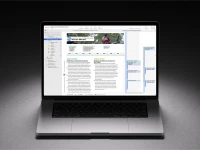
A study's problem statement connects existing research to your data and analysis that yields new solutions. But how do you create a useful problem statement for your research? In this article, we'll look at the basics with some problem statement examples.

A well-defined problem statement is one of the key elements of a rigorously designed research project. It is based on your literature review and informs your study design in a manner that facilitates the creation of a proposed solution through the data analysis.
This article looks at the concept of problem statements, their role in a research project, and how to write a problem statement for conducting effective research.

While data collection and data analysis get most of the attention in any given primary research project, research relies a great deal on the amount of effort placed in the preparation of the research design. This preparation involves demonstrating a thorough understanding of the current research in order to assess the value and novelty of the new research being presented.
To ensure that the primary research and its underlying research questions are novel and interesting in their contributions to scientific knowledge, the overall study is supported by a robust and rigorous literature review. This review should provide a comprehensive survey of the conceptual and empirical knowledge relevant to the study being conducted.
A problem statement bridges the literature review and the resulting study. It synthesizes the salient points and gaps in the existing research and makes an argument about the kind of research that should be conducted to generate new knowledge.
An effective problem statement sets the tone for the rest of the study, in that it identifies what needs to be researched and how. This assertion is based on what existing research has already established, making it clear that new research would make a novel contribution to scholarly knowledge.
A problem statement is a clear declaration of what research should be conducted and what theory should be developed. To that end, a problem statement can provide an explicit description for research audiences, which is useful for just about any research project. A problem statement explains why the larger research study is necessary or expands scientific understanding.

Here is an example of a problem statement that might be found in organizational research in financial services contexts.
The financial services industry suffers from issues arising from poor customer service, and the problem's financial costs continue to rise as the demand for financial services increases. Research and professional literature on the financial services industry have long posited that a business world increasingly dependent on automation and digitization is a root cause negatively affecting the financial service workforce's morale.
However, there is insufficient primary research to provide insights as to how to improve workplace conditions, a prerequisite for implementing solutions to provide better customer care. Further study is required in order to identify how financial service business leaders can create a productive workplace necessary for quality customer service outcomes.
The above problem statement looks at key workplace aspects influencing a financial services company's ability to identify potential solutions to deliver outstanding customer service. It refers to existing discussions in scholarly research and professional publications while asserting that such discussions have yet to illustrate any useful solutions to the problem that needs to be addressed.
A study's own problem statement has three main components: a synthesis or summary of the existing knowledge relevant to the research inquiry, the gaps identified by that review and why those gaps are important, and the kind of research necessary to fill those gaps.
Let's examine the parts of another example problem statement that might belong in a larger study about education:
The contemporary literature has highlighted numerous cases where literacy teachers have elicited detailed and well-supported ideas from their students when asking more open-ended questions.
In the sentence above, the author has pointed to previous research (which should be described and correctly referenced in the literature review) about the effects of open-ended questions on high school students. In particular, students offer more details for ideas during interaction.
However, previous research has not examined whether the engaging classroom interactions from open-ended questions are related to other learning outcomes.
Here, a lack of empirical evidence illustrates a gap in the research that needs to be filled.
Moreover, any evidence presented thus far has been primarily focused on learning outcomes that can be measured in standarized tests. This leaves other important learning outcomes overlooked, such as students' motivation, comprehension, or creativity.
The problem statement goes further by pointing out a methodological gap in understanding the effects of classroom interaction and why this is important.
Further research that captures students' perceptions and interpretations of being asked open-ended questions by their teachers can meaningfully extend current theory and practice by shedding light on other important learning outcomes.
The last component highlights how the present research makes a novel and interesting contribution to existing literature, thus justifying the research to be presented.

Make the most of your data with ATLAS.ti
Download a free trial and turn your qualitative data into critical insights with our powerful analysis tools.